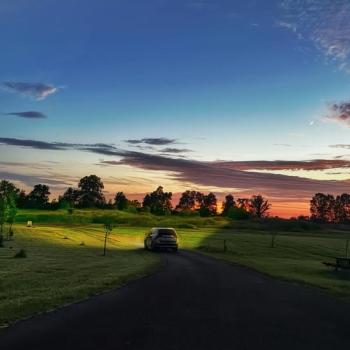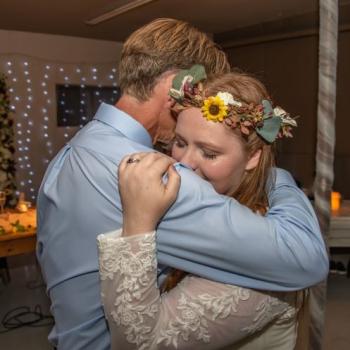As we came up to one of the tunnels, suddenly everybody seemed to randomly stop. But because I could see over the heads, I could see ahead that the entry to the tunnel actually had a red light in the signal built over it. So with sheer force, the guards kept more people from filing in. If you are the average Muslim and cannot see, it is likely that you will push to move forward and or you will be pushed by others in their urge to move forward. So it is difficult, if nothing else but by the sheer flow of people continuing from further behind.
Inside the tunnels, there is both protection from the sun's heat and the air blowing from these huge industrial fans as you walk underneath. Naturally you walk slower inside the tunnel and you rush in from the heat of the outside. Then at the end of the tunnel you linger before coming back out into the sun and heat again. See, simple people logistics. So, the Saudi authorities have to account for these discrepancies by stopping pilgrims from filing in at certain intervals. The pilgrims may or may not be aware of these logistics intent as they are upon completing the ritual.
Now, one or two other logistics to the people walk: Drones of people are adding to the masses from various tent sites, and the people walk organizes them into five different levels responding to the five levels inside the pavilion. From outside these divisions are also not self evident, but there are signs "to the second level," or "to the ground floor," etc. As we file up a ramp or turn away from one we were fed into an escalator shaft, or another ramp, until we are divided into five large groups, never ceasing our flow into these various levels. It's amazing to see and even more amazing to do.
Then when we get to our level of the pavilion, there are hordes of people, especially at the first most part of the pillars throwing one by one their seven stones, saying "bismi-Lah, Allahu Akbar, in the name of God, God is greatest!" for each stone. After each of the first two, you should stop and make du'a turning first to the right and next to the left. The idea is to resist worldly temptations from the right and left. At the third, largest pillar, you should simply exit as if to accept that your stones and du'a have successfully rid you of evil within, around and outside yourself.
I was really impressed with the planning of the pavilion and of the people walk. Even after you depart from the Jamarat you are "moved" along and cannot flow backward, which was also the source of a tragedy in previous years with people trying to move in both directions. As I said, we must do this at least once a day for three days. If you are caught in the Mina camp after sunset on the third day, then you must throw one more time, which is why we collect enough stones for that possible third day.
In order to get out of ihram (and to de-dust from literally two days in three different deserts in the same clothes), our only option was to take a shower inside the toilet stalls. These community toilets are provided at about 30-40 persons per stall. That meant that before prayers, the lines would start to form and it would take a while to see to the basics. At this point, some of the women had taken to washing and hanging their clothing. This exacerbated the already stressed conditions. This is also why those who say do not take extra clothes to Mina are just nuts. There is no other way to change. I tried three times on the day after my first ramy Jamaraat to get into one of the stalls to shower and change my clothes.
Even when I did finally get a chance, I literally let three other women in before me, because they each said they only needed to use the toilet (and how could I make them wait just because I myself had waited, right?). I also drew the luck of the cards, with a stall whose door latch did not work properly. Midway into the shower, women were banging on the door and trying to open it. I actually dressed only in a knee length shirt and left the stall to complete my dressing where there was more space and less water (to say nothing of a whole in the ground, which is the toilet itself, right smack under the water spigot for the shower).
It was then that I really looked forward to the conditions of my tiny room in Makkah. I needed a more thorough and a lot more private shower experience. Let me just say up front, nothing endeared me to the Mina camps.
I know some people report having bonded with their tent mates or are moved by having shared this experience. That did not happen with me. From the first night, I experienced only difference and in order not to lose the benefit of the larger ritual objective—forgiveness, atonement, and transformation—I gave up trying to bond with my mates. If nothing else, I felt more estranged the more time I had to spend there. After my first ramy Jamarat, I could have opted to proceed to Makkah and complete what is known as tawaf ifadah and my last run for sa'iy. But by then, the tour group made no plans for transports. This became the issue for the next three days, as a woman travelling alone.




